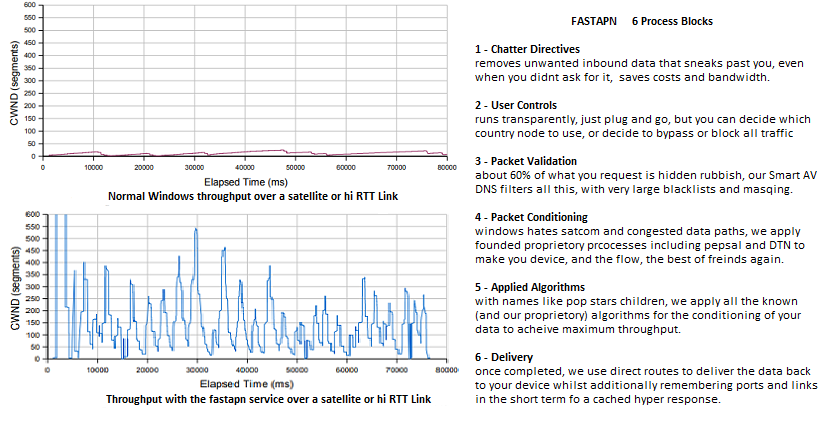This FLYTLINK service significantly improves internet access speed for networks and services that are predominantly over satellite links, or any links have either high response times or where quality issues due to an extensive number of concurrent users, these normally occur where the cost of provisioning the service is high, such as aviation systems.
The service has been constructed based on our 27 years of satcom and aviation experience, and contains multiple proprietary concepts, algorithms and procedures, and incorporates our SmartAV DNS servers for automated content controls. It is also noninvasive, does not require hardware, or any software to be loaded on any device.
Additionally, the service enhances all protocols, ports and services, even your Outlook email, exchange and streaming enjoys the same acceleration, security and protection processes without any interaction by yourself. It’s is simply plug and go, but there is also the ability to track throughput, resource usage and logs, should you wish to do so.
The fastapn service has several subsets of speed and enhancement processes, which all address connections where there are extended Return Trip Times, and converts those long waits into acceptable high speed RTT’s,
as well as greatly increasing throughput at all levels.
It can be used on all network types and by anyone
whether Satellite, Mobile or ADSL / SDL right through to big fat pipes, from any loctation and on any of our global nodes. You can choose to use proxy settings in browsers, mobile devices, aircraft cabin routers,
APN’s, VPN’s and even PPPoE, or reroute your entire traffic through your server (reverse) proxy’s on corporate networks.
For high RTT’s
at the network level, it uses netfilters to intercept connections that arrive from satellite or terrestrial high RTT links and “steals” the TCP SYN packet in the three-way handshake phase of a TCP connection,
then pretends to be the other side of that connection, and initiates a new connection to the real endpoint, using a userspace application that directly copy’s data between the two sockets.
It DOES NOT require modifications
on content servers or satellite receivers, it is sufficient to access the services from any device through the PROXY’s, APN’s, VPN’s or even PPPoE. and directly replaces the need for of commercial “black-boxes”
or complex in house software acting as performance enhancing proxies.
Automatic Hybla, Westwood, Tahoe, Reno and OILA Congestion Algorithms
TCP Hybla and Hybla-i protocol addresses both the issues of satellite and high RTT links. Hybla-i combines TCP Hybla to solve the problem of high RTT’s and TCP Westwood to solve the high link error rates.
It continuously calculates bandwidth used by the connection; this bandwidth is used to set the congestion window when packet loss occurs. Other Algorithms are automatically selected based on the connected network performance.
Multipath MPTCP Enabled
MultiPath TCP (MPTCP) is an effort towards enabling the simultaneous use of several IP-addresses/interfaces by a modification of TCP that presents a regular TCP interface to applications, while in fact spreading
data across several subflows. Benefits of this include better resource utilization, better throughput and smoother reaction to failures.
MPTCP has broken the record for the fastest TCP connection ever – have a look here how 51.8 Gbit/second with Multipath TCP was acheived.
You can test any of our servers throughput (client or server to server) with iperf3 -c fastapn.com


